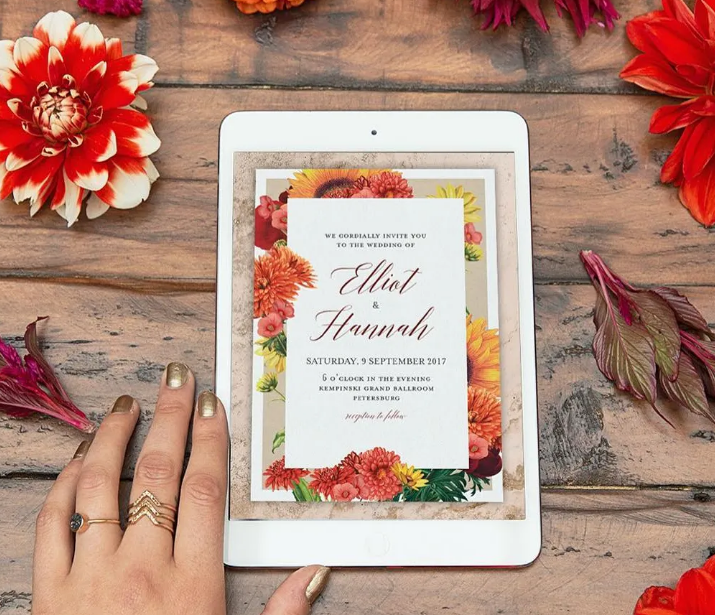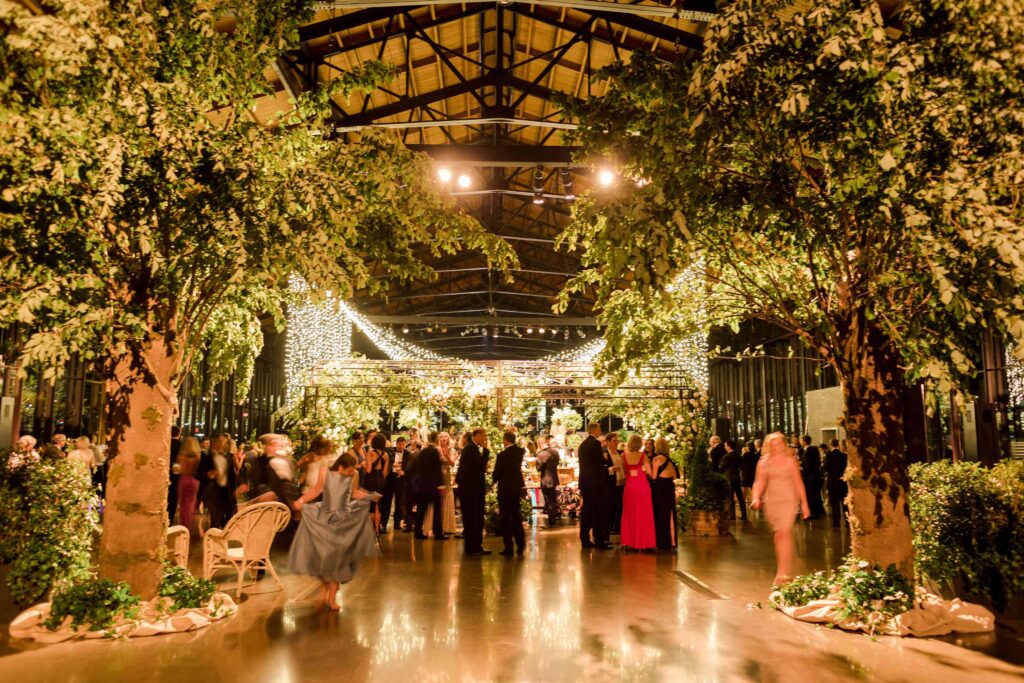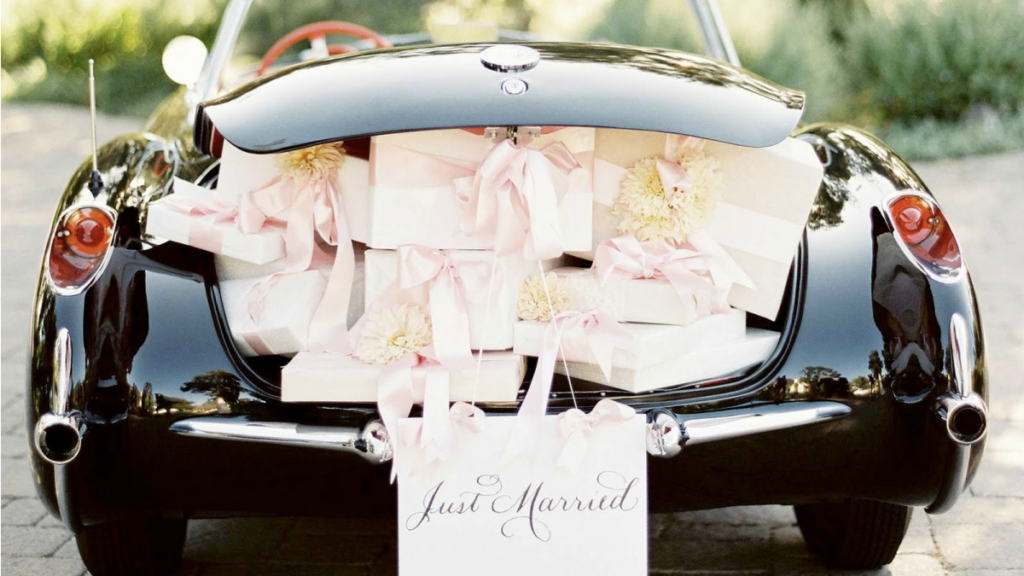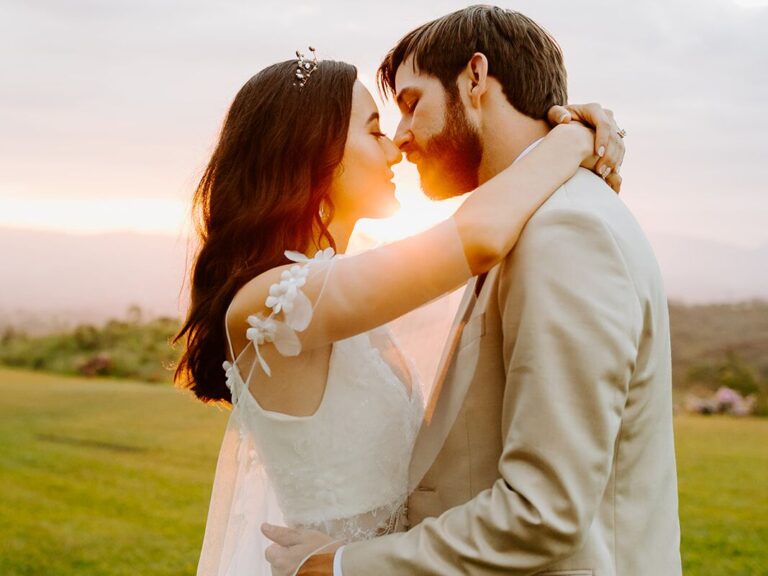With so many different elements and suppliers involved in a single wedding day, putting on a truly sustainable wedding is no mean feat. We’ve shared our tips on how to reduce the carbon footprint of your wedding day and get your guests on board.
1. Go digital

One of the biggest ways to reduce paper use and wastage in the wedding planning process is to go digital with your invitations. Many couples use wedding websites to communicate information to their guests about accommodation, taxis, gift registry, music requests and all sorts.
If you would like to use paper invitations for a keepsake (or because you’re a stationery lover!), consider using recyclable invites – you may have to pay a little more, but it’ll be worth it.
2. Be selective with your suppliers
If your mission is to have a sustainable wedding, your suppliers need to be on board as they’re such a huge part of the day. When researching and shortlisting your suppliers, speak to them about how they source their produce or materials – for example, choose a caterer with a focus on local, seasonal produce, or ask your florist to source locally grown flowers.
3. Choose a vintage or pre-loved wedding dress, or an ethical designer

Choosing your wedding dress is one of the most exciting parts of the wedding planning process, so if you can make it eco-friendly, too, it’s a great experience all round! You could try vintage or pre-loved wedding dresses instead of having a new one made for you – or if you would like a brand new dress made especially for you, consider choosing an ethical designer like Pure Magnolia, Leanne Marshall or Anita Dongre.
4. Avoid single-use décor or shop vintage
It’s not just your bridalwear that you can source from vintage stores, you can pick up some great décor finds at a reduced cost – and it’s even better if they’re things you’ll use after. Try to avoid including things that will just be used on the day and then thrown away or stored away, probably never to be seen again, and shop for items that you’re likely to keep afterwards: glassware, candlesticks, ribbon and books can all be sourced pre-loved, and you could make bunting or additional, larger décor items.
5. Consider venue location

If your venue is out in the countryside with few travel links, it’s going to mean your guests using taxis or driving and parking their cars and this will have an impact on the overall carbon footprint of your day. Choosing a central venue with lots of travel links will encourage your guests to use public transport (think wedding venues in London, Manchester and other well-connected cities!) For more information about wedding venues click here.
Communicate with your guests to encourage car-shares and use of public transport
With this in mind, be sure to communicate your sustainable ambitions with your guests and encourage them to car-share or use pre-picked transport companies for their travel.
6. Choose biodegradable confetti
Most ceremony venues (including churches) now request this anyway, so it may be something that your venue asks for if you choose to have confetti at your wedding. Due to this, biodegradable confetti is easy to source online – but you could choose a local independent supplier or ask for help from your florist for some extra sustainability points!
Give seedling wedding favours
Whilst many couples choose not to give favours nowadays, if it is something you’d like to do, consider giving your guests seeds that they can plant in their own gardens when they get home – it’s super for the environment, a lovely gift, and a great, lasting reminder of a lovely day.
7. Swap the gift registry for a charity donation

Gift registries can be tricky to navigate – modern day weddings are often between couples that already live together and so the tradition of your wedding guests kitting out your marital home is somewhat diluted. If you’re not planning on moving after your wedding and feel settled in your home, you could consider asking your guests to make a donation to a chosen charity (you could choose a few if you wish) instead of a wedding gift, and explain why you’ve chosen this option on your wedding website.
8. Give your bridesmaids dresses they can wear again – or let them choose their own
If you’re going for ballgowns for your bridesmaids, chances are they might not have an opportunity to wear them again and the dresses, as beautiful as they may be, will sit in a wardrobe and gather dust for months or years to come. Instead, consider opting for something slightly more casual that your bridal party will be able to wear again to other weddings or summer parties in the near future. Another option is to get your bridesmaids to choose their dresses themselves – if they love it they’ll be likely to wear it again.
9. Eco-friendly honeymooning

The carbon footprint of the stereotypical honeymoon can be pretty high and there are fewer factors that can be avoided here. However, there are a few ways to reduce your environmental impact and still have a memorable, romantic and exciting honeymoon.
Try to avoid long-haul flights if you’re travelling abroad, and try to find an eco-friendly hotel in your research process. When you find hotels that you’re interested in, ask them about the steps they take (if any) to reduce their carbon footprint, where their produce comes from, who their suppliers are and how they do things. How is the swimming pool heated? Is it family-run or a chain? It might be utterly beautiful, but if their breakfast buffet setup is full of single-use plastics, you might want to reconsider: it depends on your personal priorities.
Once you get to your honeymoon destination, you’re bound to do a bit of exploring: consider buying local from independent restaurants, markets or retailers to help the local economy and, if it’s safe, drink tap water. Of course, if you’re advised against this, don’t sacrifice your health (you don’t want to get ill on your honeymoon!) but if it’s an option for you try to avoid bottled water.

